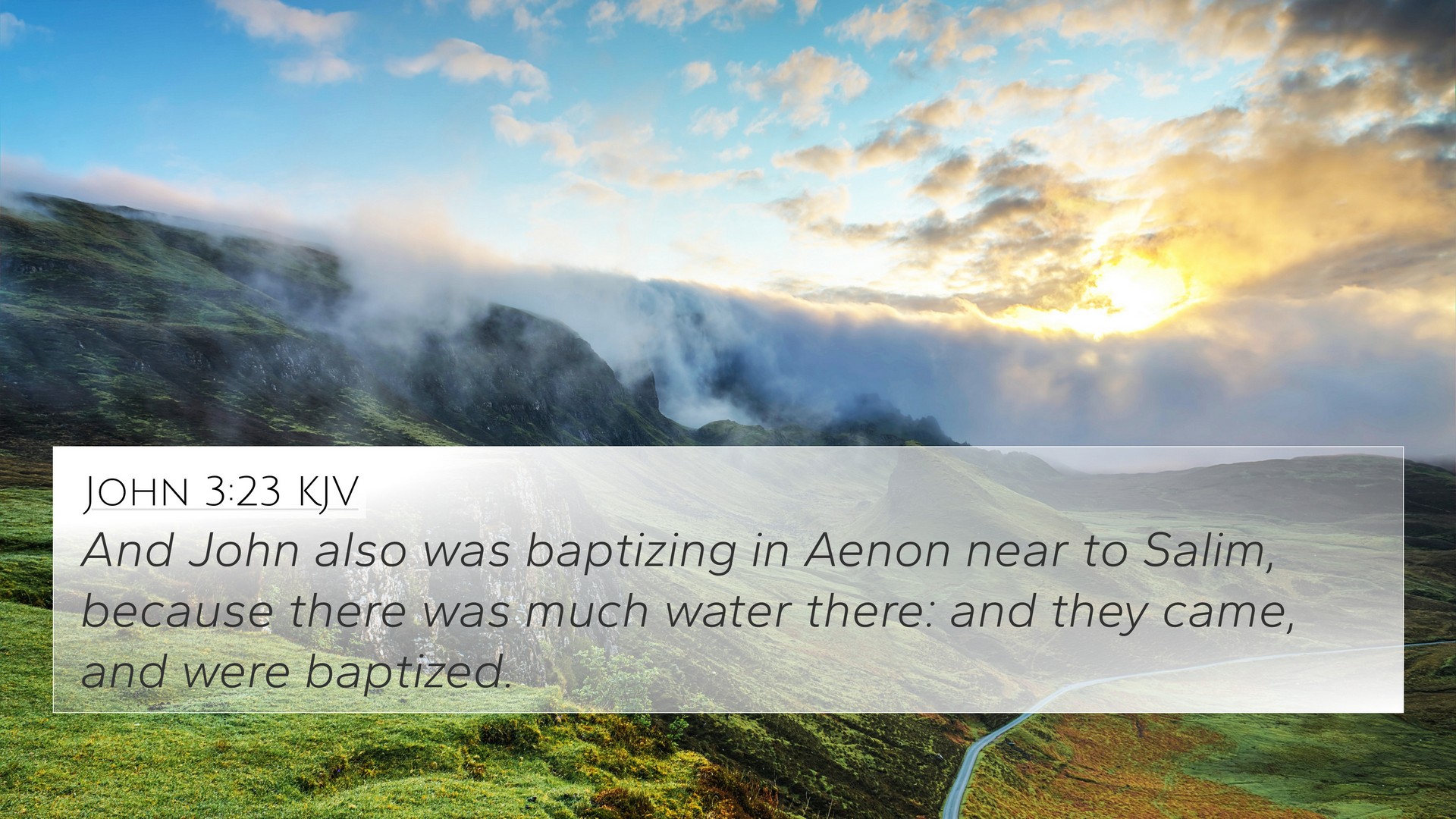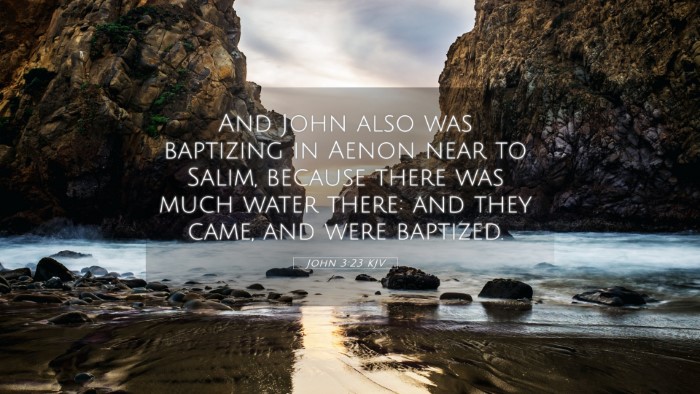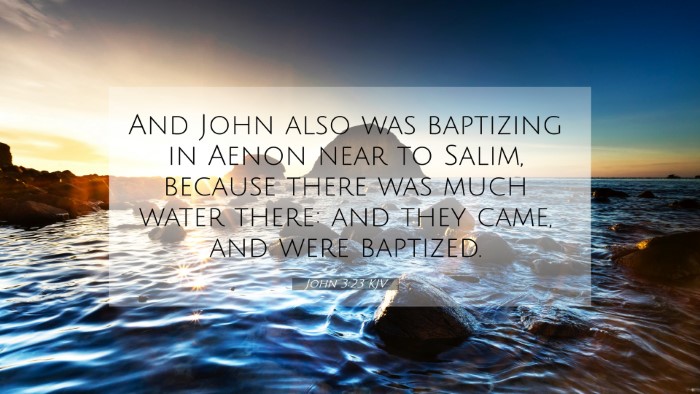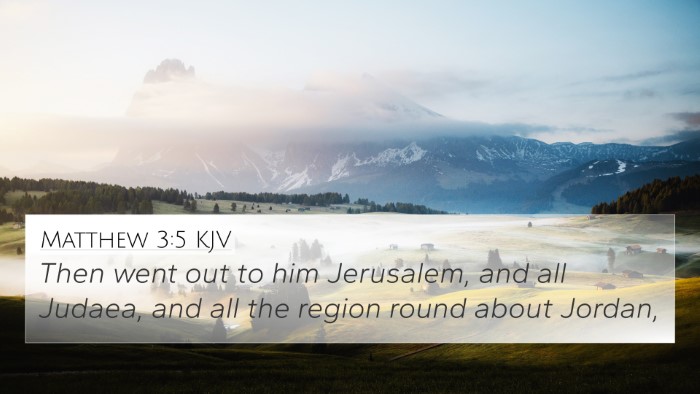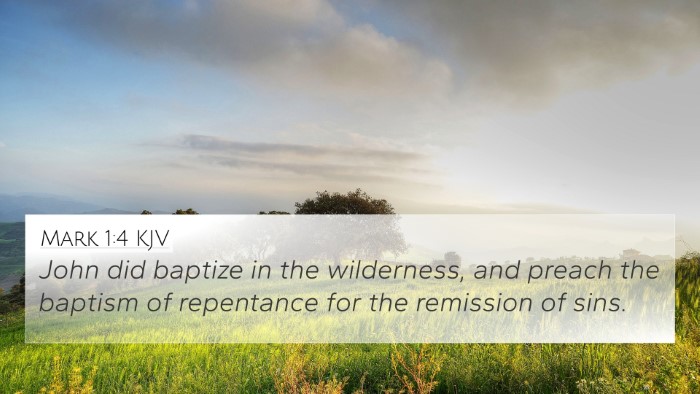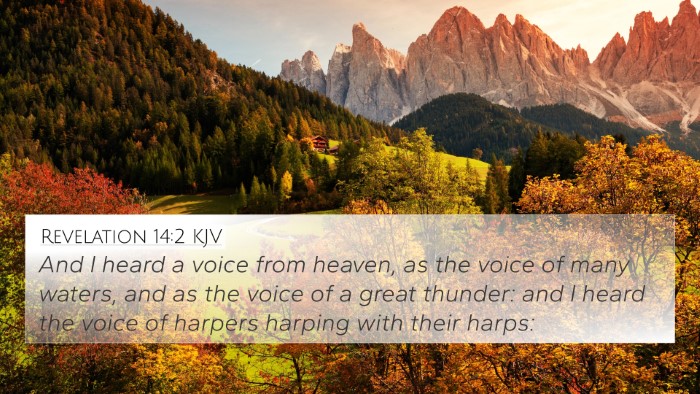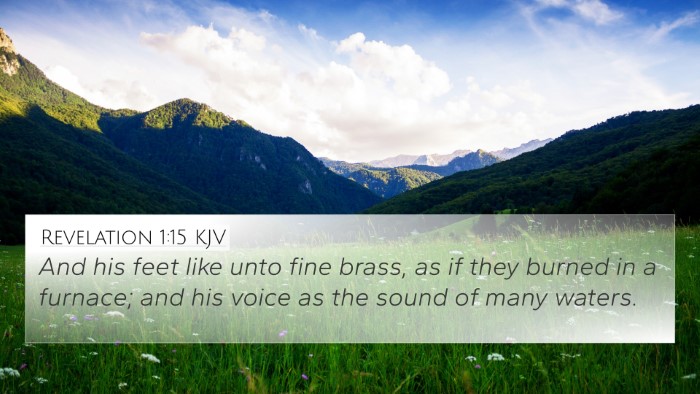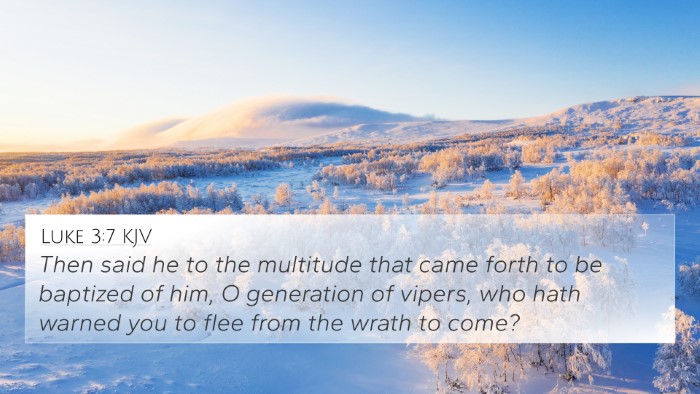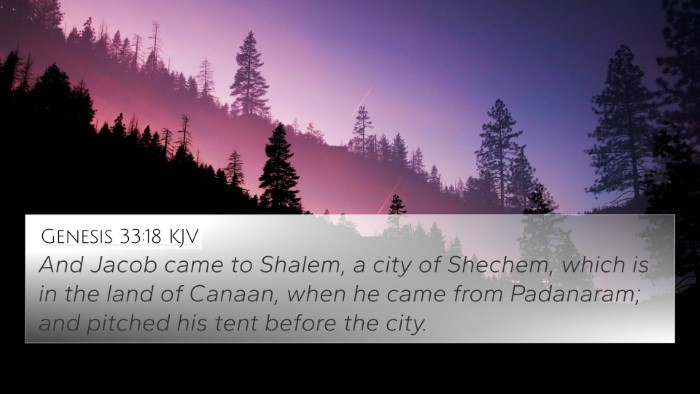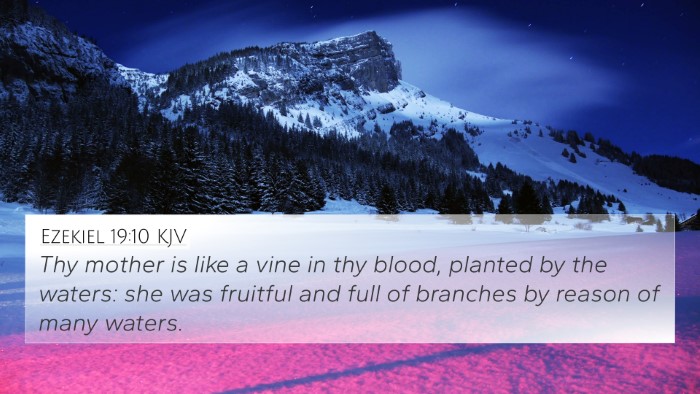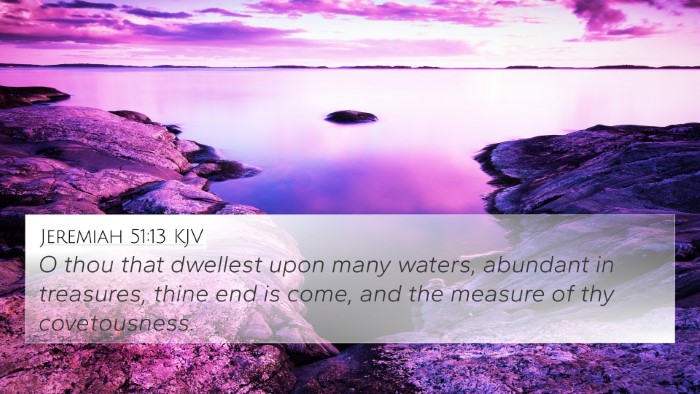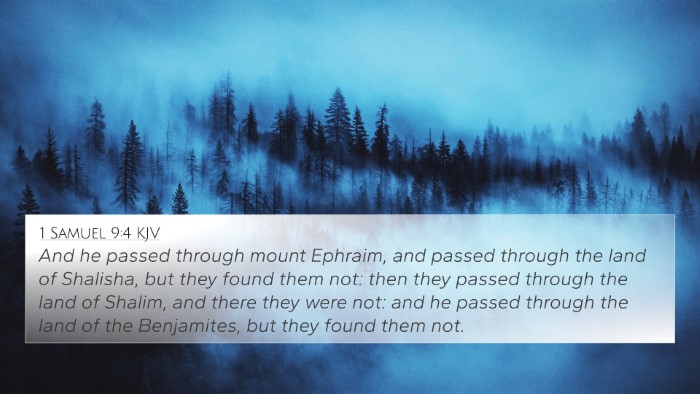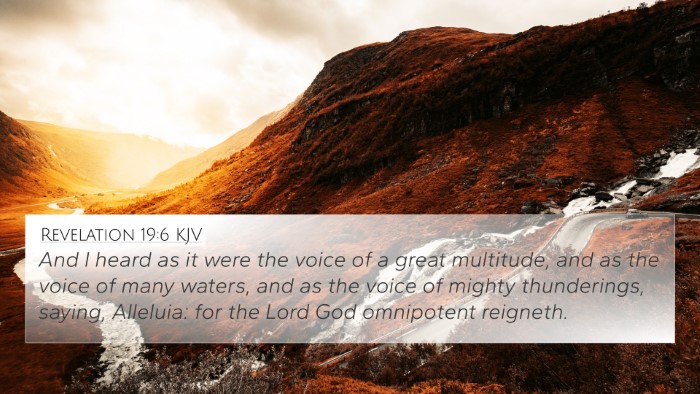Bible Verse Meaning and Explanation for John 3:23
Verse: John 3:23 - "John also was baptizing in Aenon near Salim, because there was much water there: and they came, and were baptized."
In this passage, we witness John the Baptist continuing his ministry of baptism in Aenon. This verse is significant in highlighting the practical aspects of baptism and the importance of water in the practice as a symbol of purification and spiritual renewal.
Commentary Summary
Insights drawn from public domain commentaries help elucidate the themes and meanings encapsulated in this verse:
- Matthew Henry: Matthew Henry emphasizes the significance of John’s location for baptism. Aenon, which means "springs," is a place abundant with the water necessary for performing immersion baptisms. This points to the necessity of true baptism and underlines the physical aspect as a representation of spiritual cleansing.
- Albert Barnes: Barnes notes the importance of the geographical context, stating that the abundance of water in Aenon highlights God’s provision for spiritual nourishment and symbolizes the living water Jesus later references. John’s baptism serves as a preparation for the ministry of Christ and foreshadows the transformative work of the Holy Spirit.
- Adam Clarke: Clarke offers insight into the widespread impact of John’s ministry in Aenon, noting that many came to him to be baptized, illustrating the effectiveness of his preaching. This reflects a pivotal moment in the history of salvation, as John leads many to repentance before Christ's arrival.
Thematic Connections
This verse not only stands alone but connects with numerous other biblical themes. Here are a few notable cross-references:
- Matthew 3:6: "And were baptized of him in Jordan, confessing their sins." - A parallel showing John’s methodology in baptism.
- Mark 1:4: "John did baptize in the wilderness, and preach the baptism of repentance for the remission of sins." - Emphasizing the purpose of baptism as a call to repentance.
- Luke 3:16: "John answered, saying unto them all, I indeed baptize you with water; but one mightier than I cometh..." - Highlights the distinction between John's baptism and that of Jesus.
- John 1:26: "John answered them, saying, I baptize with water: but there standeth one among you, whom ye know not." - Further elucidating John's role as forerunner to Christ.
- Acts 19:4: "Then said Paul, John verily baptized with the baptism of repentance, saying unto the people, that they should believe on him which should come after him, that is, on Christ Jesus." - A New Testament affirmation of John’s mission.
- Romans 6:4: "Therefore we are buried with him by baptism into death: that like as Christ was raised up from the dead by the glory of the Father, even so we also should walk in newness of life." - The symbolism of baptism as a new beginning is extended here.
- 1 Peter 3:21: "The like figure whereunto even baptism doth also now save us..." - This verse connecting baptism with salvation is crucial in understanding its spiritual significance.
Understanding Baptism Through Context
John 3:23 also serves as a bridge between the Old Testament traditions of cleansing and the New Testament's fulfillment of baptism's significance:
- Leviticus 11:36: Refers to the importance of water in the laws of purification.
- Isaiah 44:3: "For I will pour water upon him that is thirsty, and floods upon the dry ground..." - Illustrating God’s promise of spiritual renewal.
Tools for Exploration
For further exploration of the connections and meanings of biblical texts, consider utilizing:
- Bible Concordance: A tool that helps locate verses based on keywords.
- Bible Cross-reference Guide: A resource to identify scriptures that relate to each other.
- Bible Reference Resources: Comprehensive materials to aid in deeper study.
- Cross-reference Bible Study Methods: Techniques to understand the interrelations of biblical themes.
Conclusion
John 3:23 is not simply a narrative of John's actions but serves as a theological reflection on the necessity of water in baptism—the symbol of repentance, cleansing, and preparation for the coming of Christ. This verse stands within a greater tapestry of scripture, inviting readers to explore rich connections across biblical texts, revealing a divine narrative woven through history.
